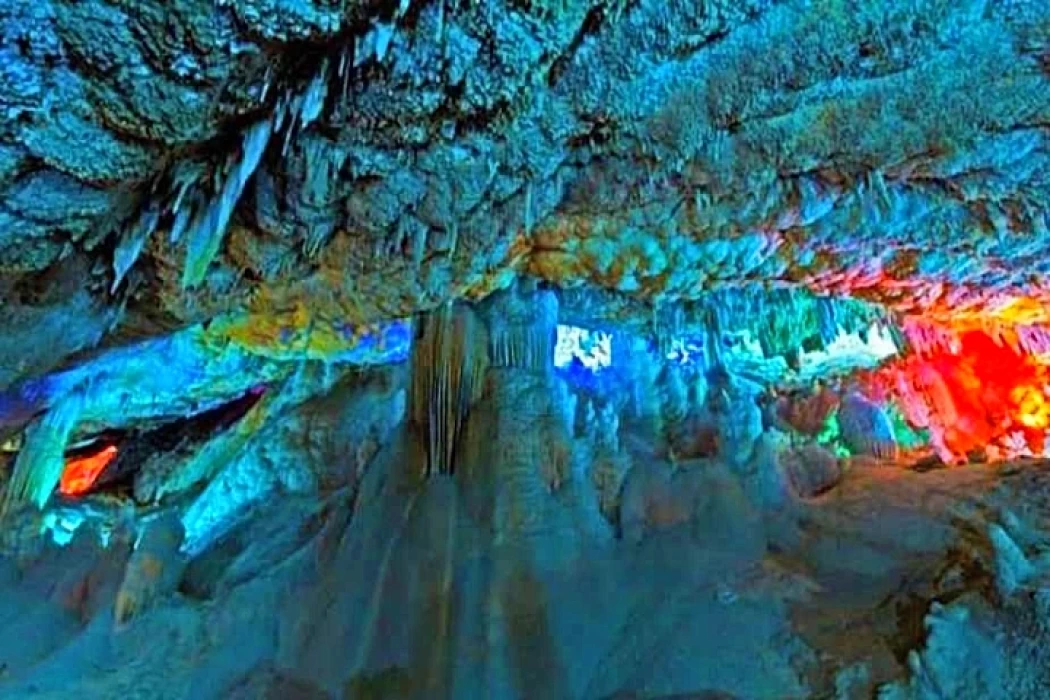
Sannur Valley Cave Protectorate | Beni Suef
Sannur Cave, Beni Suef
Geological Treasure
Wadi Sannur Cave has aged forty-seven million years, housing beautiful stalagmites and stalactites with rich limestone formations. The cave consists of two large chambers, featuring unique formations that resemble pears, corals, and islands. These chambers present a superb view to visitors.
Why Should You Go to Sannur Cave?
One of the Rarest Natural Formations on Earth
Paradise for Geologists & Researchers in Old Climate Studies
The Untold Secret for the Adventure Seekers in Egypt's Eastern Desert.
Discover Sannur Cave on Your Beni Suef Tour!
Going to Sannur Cave is like time traveling, witnessing the lands of Egypt endowed by nature. Whether you are a history buff, nature enthusiast, or adventure traveler, this geological marvel is worth experiencing.
Reserve Your Tour in Egypt Now and Explore the Wonders of the Wadi Sannur Cave!
About 200 km from the Egyptian capital Cairo, specifically in Beni Suef Governorate, one of the oldest caves in the world is located. Wadi Sannur Cave Reserve is one of the most important tourist attractions in Egypt, especially for its proximity to Cairo, and it has a long history. It is the result of a number of chemical reactions of groundwater underground and its mixing with limestone since the Eocene era, 40 million years ago. This led to the production of alabaster marble, one of the finest types of marble in the world, and the ancient Egyptians excelled in its use in the manufacture of ornamental utensils.
Sanur Valley Cave Protectorate
Wadi Sannur Cave is a part of the Eastern Desert. It is located within the Al-Ma’adh Plateau to the north of Wadi Sanur, east of Beni Sueif, that is, 70 km from the city of Beni Sueif. By car for more than an hour, then the journey begins on foot for a distance of not less than another half hour.
Discovery
"Sanur Cave" is one of the most important quarry stores that the Egyptian sculptor relied on to make his history, from stone statues, from which he extracted alabaster ore to carve statues and to make pots, vases, scarabs, and other tools that were found in the tombs of kings and commoners, and it remained a major quarry for ore. Marble until 1991, and at the beginning of 1992, while the quarry workers were busy at work, an explosion occurred that revealed an opening that led to the discovery of the cave.
Natural protectorates in Egypt
As soon as the scientific and geological studies and research concluded, which concluded the importance of the cave as one of the oldest caves in the world and the main permanent one for the ancient Egyptians in the making of their stone civilization, the Prime Minister issued Resolution No. 1204 of 1992, which stipulated the registration of Wadi Snoor Cave as a nature reserve in the framework of Law No. 102 of 1983 regarding natural reserves, the third article of which stipulates the prohibition of any actions, behaviors, activities, or procedures that would damage and deteriorate the natural and wild environment surrounding it.
The cave dates back to the middle Eocene era, about 47 million years ago. The water began to dissolve the limestone, forming small dissolving pits, before they connected to each other, which led to the formation of a small cavity. This led to its upbringing and the gradual water level in it. With climate change and a tendency to drought, the stored water began to seep through the cracks, which led to the formation of some solutions, acids, and sediments that stand witness to the existence of wet periods that passed through the land of Wadi Sanur and the Eastern Desert. Large quantities of decorated materials were found in Wadi Sannur Cave, consisting of stalagmites, stalactites, curtains, and beautiful columns. The cave consists of two large bays to the right and north of the opening leading to its interior, in the right part of which are limestone formations, taking different shapes of pears, islands, and coral reefs.
The importance of the Sanur Cave
The quality and rareness of the natural formations found in the cave make this place the rarest one on earth. The place seems to be an ideal arena for researchers to conduct detailed and comparative studies that can help in getting a deeper understanding of the environmental conditions that were present during the ancient era.
Visit Sanur Cave on your trip to Beni Suef or Egypt.
Finally, we hope you enjoyed our insightful work, and if you would like to book an Egypt tour.














